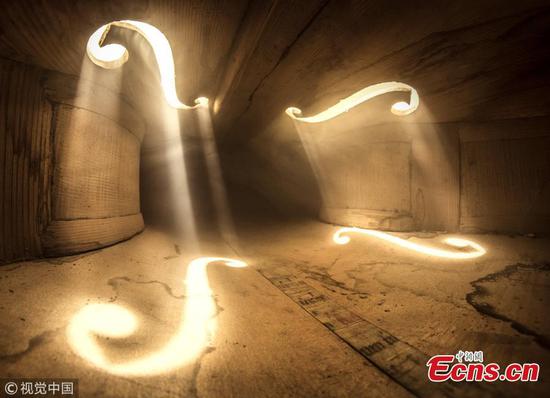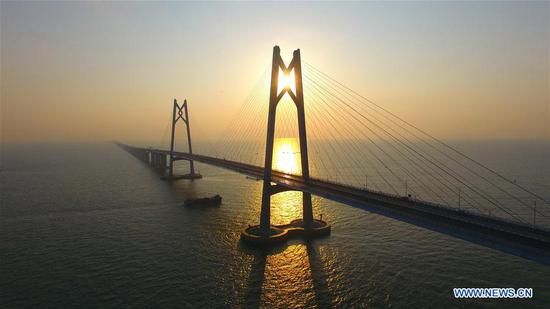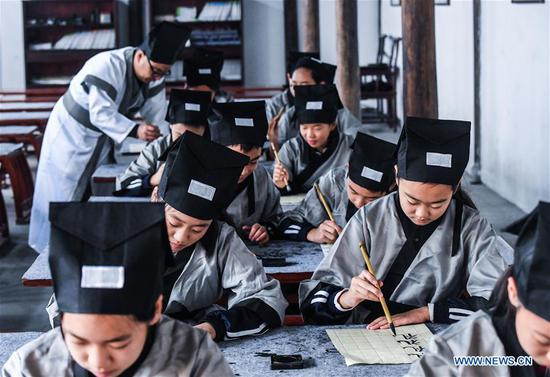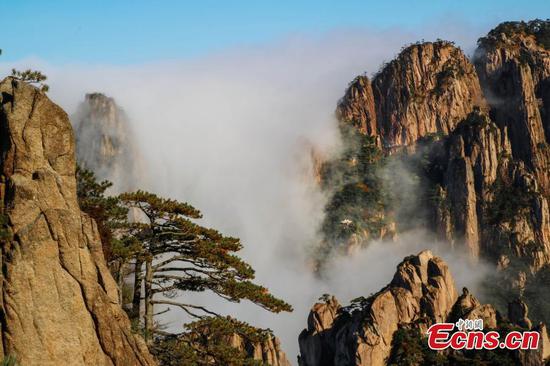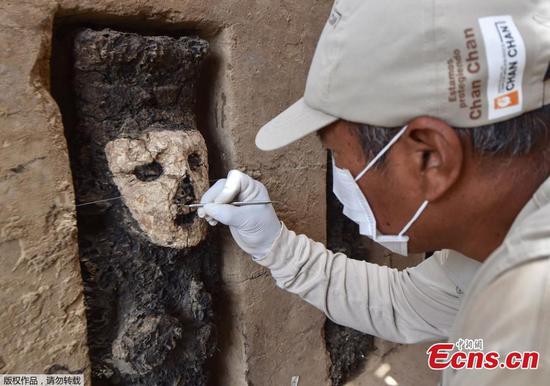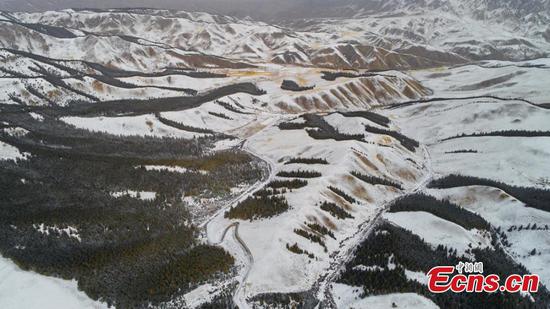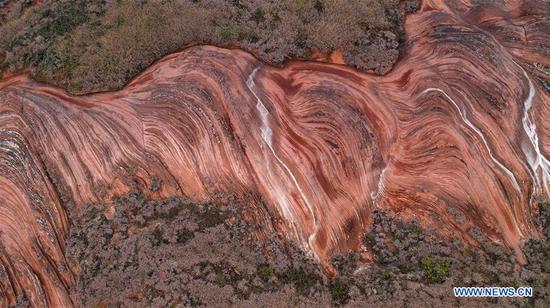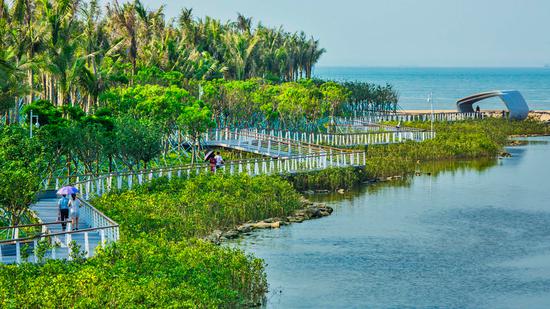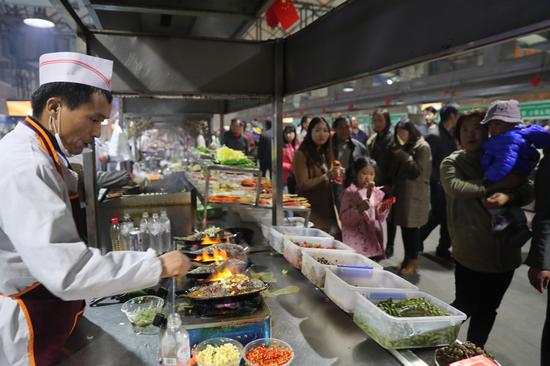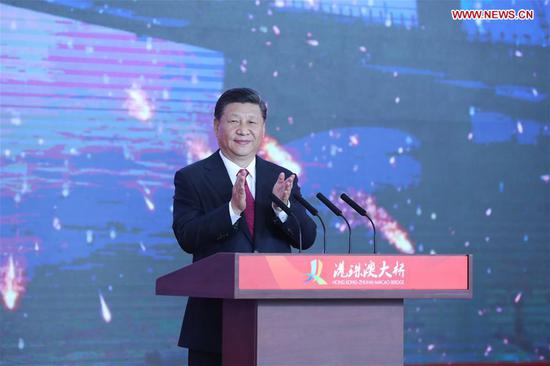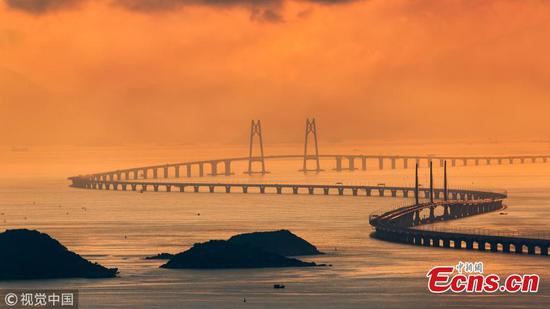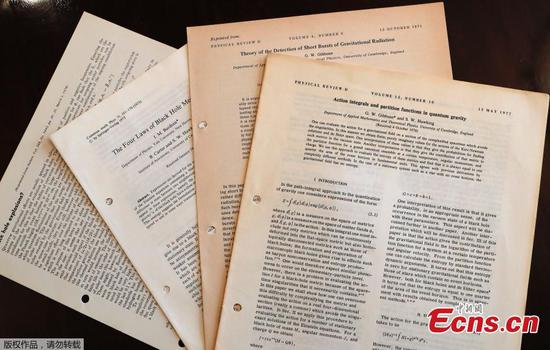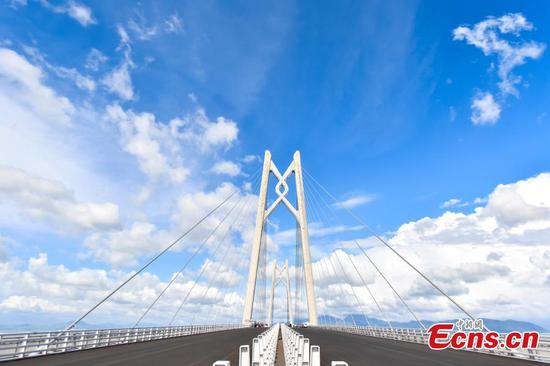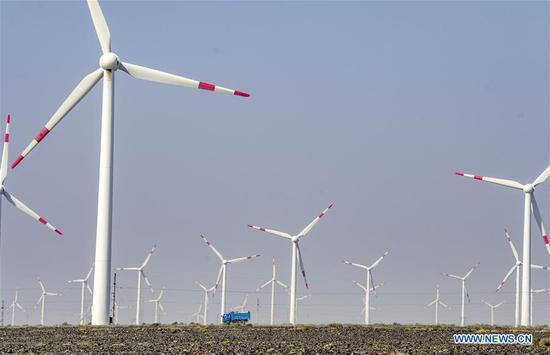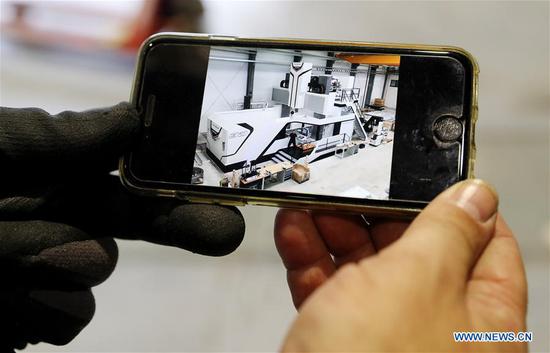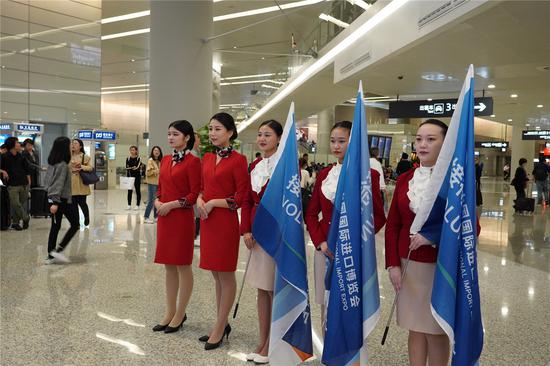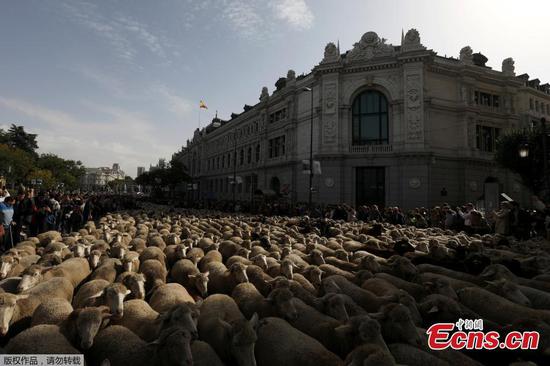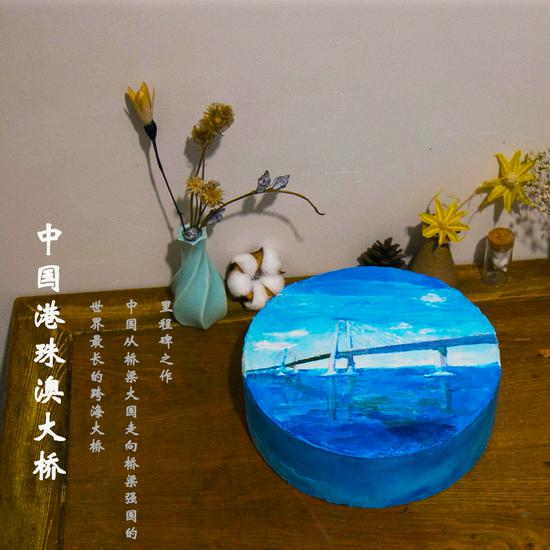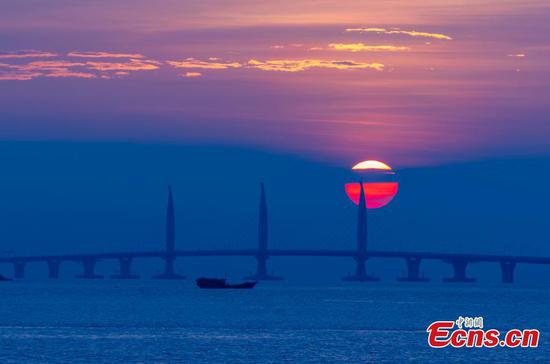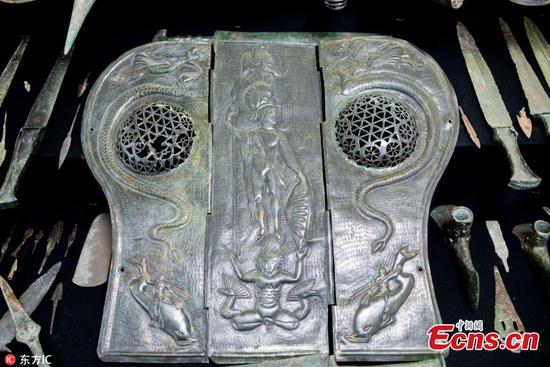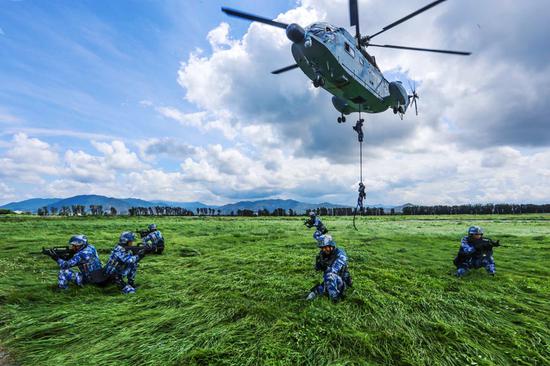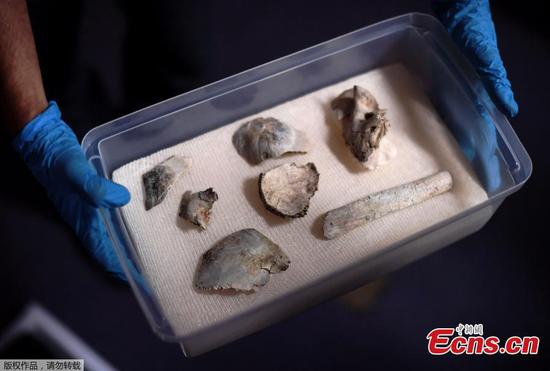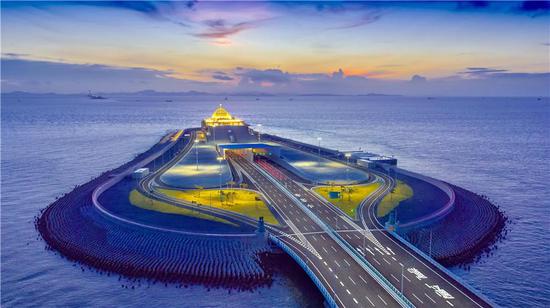
An engineer introduces construction of artificial islands for the HZMB. (Photo provided to China Daily)
Editor's note: Kong Qingjiang is the dean of the School of International Law at the China University of Political Science and Law. The article reflects the author's opinions, and not necessarily the views of CGTN.
The long-awaited Hong Kong-Zhuhai-Macao Bridge (HZMB) had its opening ceremony on October 23. The completion and the opening of the bridge will definitely bring forth political, economic and social development to the Pearl River Delta Region, one of the most dynamic economic zones in the world. In particular, it will have far-reaching implications for the economic development in the region.
Firstly, the HZMB itself is a megastructure with a modern and elegant look. Named as one of the "Seven Wonders of the Modern World" by the Guardian, it is a bridge-tunnel system, which consists of a series of three cable-stayed bridges and one undersea tunnel, as well as three artificial islands. The 55 kilometer-long bridge is the longest sea crossing in the world and an engineering masterpiece. It is expected to become a tourist attraction in the region and beyond.
Secondly, the Hong Kong-Zhuhai-Macao Bridge connects the three cities on the Pearl River Delta. It is a good illustration of the “One Country, Two Systems” spirit and will not only facilitate road access, but also connect the hearts of the people of the mainland and those of the two special administrative regions. It will strengthen the cooperation and exchanges between the Chinese mainland, Hong Kong and Macao.
With the bridge in operation, the travel time would be greatly reduced. As Zhuhai is called a “garden city” and seen as one of the most livable cities in China, it is likely that more Hong Kong residents will choose to live in Zhuhai and the rest of Guangdong Province where life is less costly and fast-paced. This will have subtle psychological implications for the integration of the two special administrative regions with China's mainland, particularly with Guangdong Province.
Thirdly, it is expected that the opening of the HZMB will give a spur to the Greater Bay Area's growth. One of the strategic priorities in the area is infrastructure connectivity, including the construction of highways and bridges. The HZMB is expected to help the Greater Bay Area become a first-class region.
Fourthly, the HZMB portends the rising position of Zhuhai in the development of the Pearl River Delta, and its west coast in particular. Being one of the five major economic zones in China, Zhuhai's superior geographical position and its policy advantages have made its transition from a small fishing village to a modern city possible.
The radiation effect of Hong Kong and Macao on Zhuhai has been an important factor in the city's development. It is expected that with the HZMB opened, the competitiveness of the Zhuhai Airport and the Zhuhai Port will thus be enhanced in the Pearl River Delta Region.
Zhuhai will become a hub to the flow of people, logistics, capital flow and information flow from Hong Kong to the west coast of the Pearl River Delta. All these will help give a strong boost to Zhuhai's local economy.









